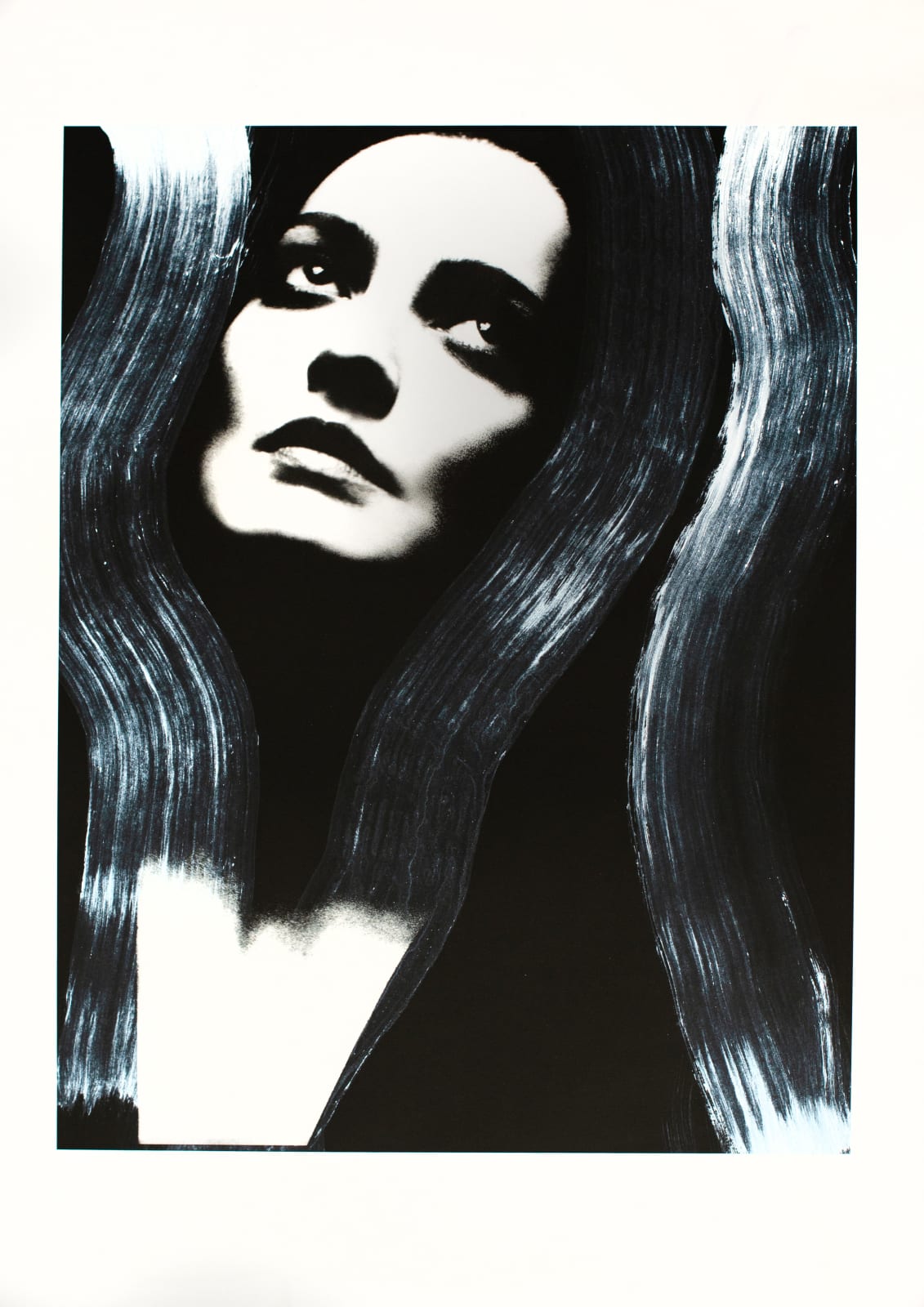David Bailey UK, 1938
Catherine Bailey, 2024
Unique overpainted photograph comprising archival pigment print with hand embellished acrylic paint on paper
Signed by the artist in pencil, on verso
Signed by the artist in pencil, on verso
Sheet: 59.7 x 41.9 cm
Framed: 67.8 x 50 cm
Framed: 67.8 x 50 cm
© David Bailey
Bailey's portrait of his wife Catherine Bailey relates to his most personal creative relationship. The image dates from his series The Lady is a Tramp (1995), which is at its...
Bailey's portrait of his wife Catherine Bailey relates to his most personal creative relationship. The image dates from his series The Lady is a Tramp (1995), which is at its core, a study of agency and self-determination. The series subverts traditional notions of objectification by foregrounding Catherine’s control within the photographic encounter.
As Catherine asserts of the series, 'I’m always in control. Always. The Lady’s a Tramp because, every now and then, she wants to be.' This assertion reorients the power dynamic between the photographer and model: Catherine is not a passive subject but an active participant, choosing her own presentation and, by extension, her own narrative.
Bailey's technique of hand embellishing the photograph references his parallel career as a painter, which has been relatively little known compared to his photography. As writer and curator Robin Muir has noted, Bailey 'has never treated photography and painting as bitter foes, but instead has drawn strengths from their interaction.'
Flowing, wavelike brushstrokes frame the composition and create a visual counterpoint to the precision of the original photograph, suggesting a fluidity of time and memory that resists the notion of a single, frozen moment.
Bailey’s act of overpainting the photograph is a critical intervention that foregrounds the passage of time, the evolution of relationships, and the ongoing negotiation between artist and subject. By transforming a photograph into a unique, tactile object, Bailey challenges the medium’s inherent reproducibility and reaffirms the unique nature of his artistic encounter.
The painted gestures overlaying his photograph echo the plurality at the heart of the series; Bailey renders the image as both portrait and palimpsest—a surface that accumulates meaning, history, and emotion over time.
As Catherine asserts of the series, 'I’m always in control. Always. The Lady’s a Tramp because, every now and then, she wants to be.' This assertion reorients the power dynamic between the photographer and model: Catherine is not a passive subject but an active participant, choosing her own presentation and, by extension, her own narrative.
Bailey's technique of hand embellishing the photograph references his parallel career as a painter, which has been relatively little known compared to his photography. As writer and curator Robin Muir has noted, Bailey 'has never treated photography and painting as bitter foes, but instead has drawn strengths from their interaction.'
Flowing, wavelike brushstrokes frame the composition and create a visual counterpoint to the precision of the original photograph, suggesting a fluidity of time and memory that resists the notion of a single, frozen moment.
Bailey’s act of overpainting the photograph is a critical intervention that foregrounds the passage of time, the evolution of relationships, and the ongoing negotiation between artist and subject. By transforming a photograph into a unique, tactile object, Bailey challenges the medium’s inherent reproducibility and reaffirms the unique nature of his artistic encounter.
The painted gestures overlaying his photograph echo the plurality at the heart of the series; Bailey renders the image as both portrait and palimpsest—a surface that accumulates meaning, history, and emotion over time.
Ausstellungen
Dellasposa Gallery, Photo London 20251
von
25
